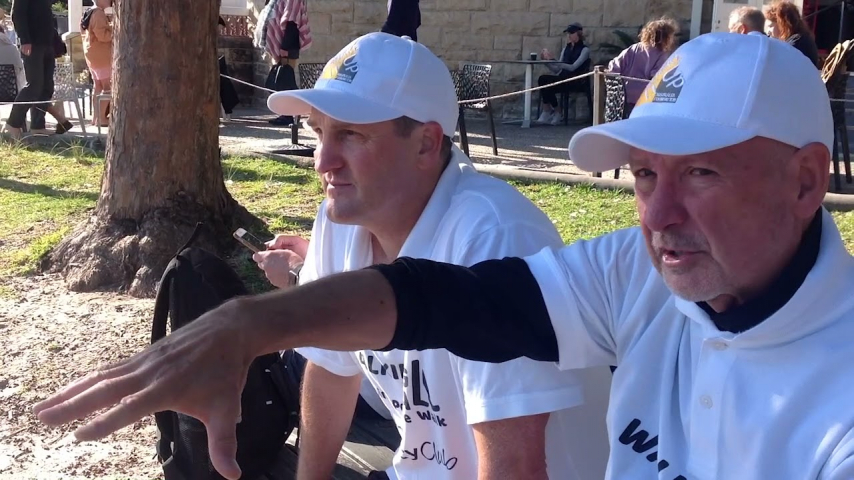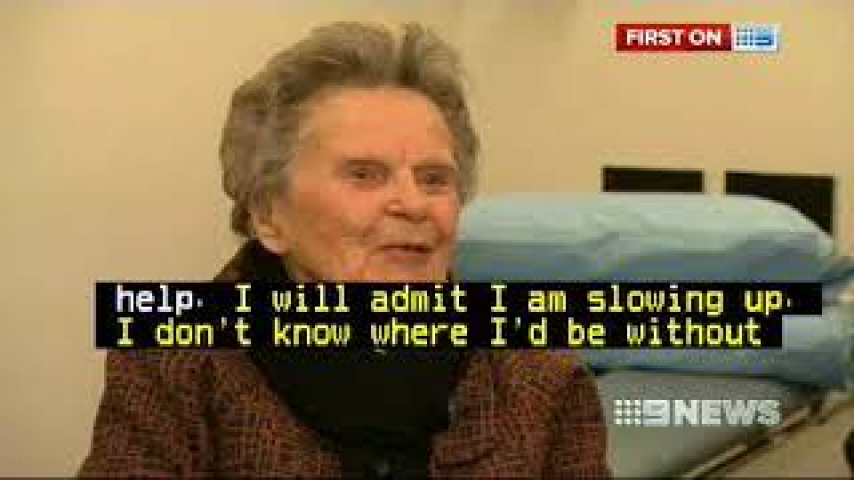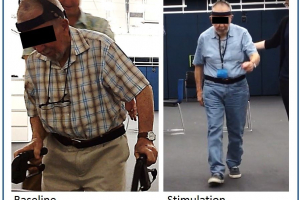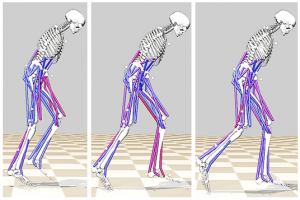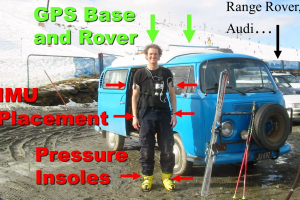
My Expertise
A Neuroscientist and Engineer, I have over 10-years’ experience conceiving new research ideas, developing technology-based interventions, and leading clinical trials. Key expertise include:
- Peripheral nerve stimulation and neurorehabilitation
- Wearable Technology and smart textiles (with Walking Tall Health)
- 3D printed orthotics to help people with gait impairment walk better (with AbilityMade)
- Health app development, telemedicine, eHealth, and health informatics (with Tyree iHealthE)
- Motor Impairment and neurological disorders (with Neuroscience Research Australia)
- Motion capture, gait analysis, and biomechanics of human movement
My team is now accepting motivated research students for a variety of projects. Please reach out for more information, I am more than happy to have a friendly chat over coffee! I am excited about collaborating with and engaging patients, students, researchers, industry partners and key stakeholders who share a common vision “to transform healthcare through technological innovation”.
Keywords
Fields of Research (FoR)
Biomedical Engineering, Public Health and Health Services, Human Movement and Sports Science, Neurology and Neuromuscular DiseasesSEO tags
Biography
A Neuroscientist and Engineer, my vanguard expertise developing wearable technology and smart textiles for gait-related motor impairment is recognised by 13 prizes, 2 research medals, 11 grants, 2 fellowships. I am excited about collaborating with and engaging patients, students, researchers, industry partners and key stakeholders who share a common vision “to transform healthcare through technological innovation”. I am motivated by...view more
A Neuroscientist and Engineer, my vanguard expertise developing wearable technology and smart textiles for gait-related motor impairment is recognised by 13 prizes, 2 research medals, 11 grants, 2 fellowships. I am excited about collaborating with and engaging patients, students, researchers, industry partners and key stakeholders who share a common vision “to transform healthcare through technological innovation”. I am motivated by solving problems at the nexus of engineering and medicine. I established and lead the new neurorehabilitation theme at UNSW. My team is now accepting motivated research students for a variety of projects. Please reach out for more information, I am more than happy to have a friendly chat over coffee!
Areas of research interest include:
- Developing new treatments for motor impairment
- Neurophysiology of unstable gait
- Biomechanical analysis of human movement in disease and health
- Prevention of falls in frail older people and clinically impaired populations
- Design and development of 3D printed orthoses to help people with disabilities
- Developing wearable technology for chronic diseases (COPD, heart failure, stroke, and age-related frailty)
- Telemedicine and eHealth including phone apps for disease management and exercise prescription
- Surfing and backcountry skiing
I have a strong focus on translation of my teams research outcomes. In 2020, I founded Walking Tall Health, a commercial organisation to accelerate the health benefits my ground breaking non-invasive treatments for motor impairment. I have led Walking Tall Health through key staff appointments, seed funding and founding partnerships with UNSW, Neuroscience Research Australia and The George Institute for Global Health. Research highlights include the New Zealand Young Scientist of the Year (for Future Science and Technology), an Innovation Award from Fédération Int. de Ski, and the Yamaguichi Medal for Gait and Kinesiology, and 100+ publications cited over 1,800 times.
Please see https://research.unsw.edu.au/people/dr-matthew-andrew-brodie for more information including videos about current projects and our recent research advances.
My Grants
|
2020 |
|
|
2019
|
|
|
2018
|
|
|
2017
|
|
|
2013
|
|
|
2013
|
|
|
2008 |
|
|
2007
|
|
|
2006 |
|
|
2005
|
|
|
2004 |
|
My Qualifications
- 2009 PhD, Massey University, Wellington, New Zealand (full scholarship)
“We haven't got the money, so we'll have to think.” Inspired by Ernest Rutherford’s famous quote; I developed Fusion Motion Capture; a network of 16 miniature wearable devices to analyse and model the biomechanics of alpine ski racing. My research made it possible to remotely monitor and provide feedback about athletes' performances in challenging alpine environments. My PhD outputs included six publications (cited over 300 times), a museum exhibition and being named the 2008 MacDiarmid New Zealand Young Scientist of the Year for Future Science and Technology.
- 1998 Bachelor of Engineering, 1st Class Honours, University of Canterbury, New Zealand (final year grade point average 9.9/10)
My Research Activities
I have over 10-years’ experience conceiving new research ideas, developing technology-based interventions, and leading clinical studies. His multi-disciplinary team includes 1 postdoc physiotherapist, 3 clinical staff, 3 engineers, 2 PhD, and 5 master’s students. Research in neuroscience and engineering is demonstrated by 122 works [cited 1,800+ times]. Key publications and impact across neuroscience and engineering include:
- BRODIE, M.A. et al., Fusion motion capture: a prototype system using inertial measurement units and GPS for the biomechanical analysis of ski racing. (2008) Sports Technology, 1, 17-28. [cited 219 times].
This seminal work pioneered the use of affordable wearable technology in human movement science. It was also a lot of fun. See the image of The Blue Monster, my mobile PhD laboratory below.
- Henderson,... BRODIE, M.A. et al., Rivastigmine for gait stability in patients with Parkinson's disease (ReSPonD): a random... placebo-controlled, phase II trial. Lancet Neurology (2016) 15, 249-258. [216 cites; 10.57 FWCI; 99th percentile]
For this top tier journal paper, I led the development of the first use of a digital gait biomarker as the primary outcome of a phase II drug trial. My analysis showed cholinesterase inhibitors can stabilise gait leading to 45% less falls. My PhD student was the first author. The paper immediately changed Parkinson's disease management as evidenced by positive review [Lancet Neurology 15(3)] and international media [Common drug is a real breakthrough… UK Express Jan-2016]. This paved the way for more efficient drug discovery by using digital endpoints.
- BRODIE, M.A. et al., Wearable pendant device monitoring using new wavelet-based methods shows daily life and laboratory gaits are different. Medical Biological Engineering Comput (2016) 54(4), 663–674. [81 cites; 3.12 FWCI; 93rd percentile]
I was the first to demonstrate that daily life and laboratory gaits are different. My algorithms have been used by Philips in their Senior Mobility Monitor and other research groups worldwide.
- BRODIE, M.A. et al., Eight-week remote monitoring using a freely worn device reveals unstable gait... in Older Fallers. IEEE Transactions Biomedical Engineering (2015) 62(11) 2588–2594. [77 cites; 3.59 FWCI; 94th percentile]
This paper presents my breakthrough analytics engine that analyses thousands of walks during daily life over 8-weeks for superior accuracy. It challenged the accepted reliance on expensive laboratory based gait assessments. Awarded the NeuRA Publication Prize 2016.
- BRODIE, M.A. et al., Comparison between clinical gait and daily‐life gait assessments of fall risk in older people. Geriatrics & Gerontology International (2017) 17: 2274-2282. [47 cites; 3.92 FWCI; 95th percentile]
I showed that remote daily life gait assessments were better than laboratory assessments for predicting falls. Outcomes have been incorporated into products by industry partners and used by other groups in phase II & III clinical trials [e.g. iStoppFalls EU consortium (ICT-7-5.4-287361) & Rivastigmine phase 3 (NIHR16/31/13)]. Awarded an Asia-Pacific Biomechanics Medal.
- BRODIE, M.A. et al., Big data vs accurate data in health... Large-scale physical activity monitoring, smartphones, wearable devices and risk of unconscious bias, Medical Hypotheses (2018) 119, 32-36. [35 cites; 3.71 FWCI; 95th percentile]
In response to Nature 547, 336–339 (2017), my paper showed how unconscious bias in unvalidated smartphone apps leads to systematic under-counting of the true daily activity in obese people, females, and different cultures resulting in skewed research results.
My research outcomes have also been translated several commercial partners, leading to global uptake. Now accepting motivated research students for a variety of projects. I am more than happy to have a friendly chat over coffee!
My Research Supervision
Supervision keywords
Areas of supervision
Please reach out for more information, I am more than happy to have a friendly chat over coffee! Now accepting motivated research students. Research projects include:
- Developing new treatments for motor impairment
- Neurophysiology of unstable gait
- Biomechanical analysis of human movement in disease and health
- Prevention of falls in clinically impaired populations
- Design and development of 3D printed orthoses to help people with disabilities
- Developing wearable technology for chronic diseases (COPD, Heart Failure, Stroke, and Frailty)
- Telemedicine and eHealth including phone apps for disease management
Currently supervising
I currently supervise and have successfully supervised many students as demonstrated by their positive testimonials:
“I would like to express my very great appreciation to my supervisor, Dr Matthew Brodie for his valuable and constructive suggestions. His willingness to give his time so generously have my deep gratitude. Dr Brodie’s ability to see the big picture while catching every detail helped this project greatly. His problem-solving skills helped me through lots of bottlenecks. The words of encouragement from Dr Brodie and his sunny personality kept me going.”
Thesis Project Jun 2019
“I’d like to take this opportunity to thank you for all the hard work and support you have shown me as my PhD supervisor. Since I started at NEURA you have been nothing but helpful and supportive and it means more to me than you’ll ever know. Your advice, guidance and experience have been tremendously helpful throughout my candidature and I would not have been able to get to this point without your help. You have inspired me to continue/complete my PhD which is something that I had almost given up on. I have learned so much from you and I look forward to continuing working with you in the future.”
Phd Candidate June 2019
“Thanks Matthew Brodie for your relentless enthusiasm; and for your kindness in agreeing to supervise me on this project. Thank you for always being communicative and somehow finding the time to spend with me. I am constantly impressed by your eye for detail and your commitment to researching everything thoroughly. I appreciate how much you encouraged me and challenged me to pursue excellence. I would be completely lost without your constant guidance and advice.”
Masters student June 2018
“Thank you to Dr Mathew Brodie for his brilliant guidance, support, enthusiasm and mentorship I learnt a lot from him throughout the project.”
Masters student June 2018
“The author would like to thank Dr Matthew Brodie for assisting and guidance for this thesis. It was the pleasure to be supervised by Dr Brodie he was such an enthusiasm and passion on topic that related to fall and balance, and also expert in Matlab and wearable device. All the guidance was very helpful and extend the author knowledge profoundly.”
Masters student June 2017
“I would like to thank Dr Matthew Brodie for his continuous support and mentorship provided throughout completion of this Thesis study. I am thankful for his motivation and enthusiasm for the work we were doing and his time for constantly taking meetings with me.”
Thesis Project June 2017
“I would firstly like to thank Dr Matthew Brodie for his support and guidance throughout this project. I am truly grateful to have had the opportunity to be mentored by someone with such boundless knowledge and willingness to teach.”
Thesis Project June 2016
My Engagement
- Brodie M., (2017) Wearable Technology: Fall risk and morbidity, new challenges and perspectives, Seminar and Webinar for Engineers Australia, 16/08/2017, Canberra Australia. www.engineersaustralia.org.au/Event/wearable-technology-fall-risk-and-morbidity-new-challenges-and-perspectives
- Brodie MA and Hausdorff J., (2016) Free-Living Gait – The Unresolved Questions: New Challenges and Perspectives, Webinar for the International Society of Posture and Gait Research (ISPGR), 28/09/2016, https://momentumssnh.adobeconnect.com/p7wca8744pw/
- Lord SR, Delbaere K, Davies T, Brodie MA (2014). New technologies for fall assessment and risk identification. Pre-conference workshop at the 6th Australian and New Zealand Falls Prevention Conference, Luna Park, Sydney, NSW, Australia, 16/11/2014
My Teaching
BIOM9541 Mechanics of the Human Body
https://www.handbook.unsw.edu.au/undergraduate/courses/2021/BIOM9541/
BIOM9541 covers in depth the methods used in the analysis of the biomechanics of the musculoskeletal system. I cover methods to analyse body segment and joint kinematics, joint kinetics, work and power, muscle forces and associated energy cost. We look at advanced uses for wearable technology. Applications of biomechanics in clinical, occupational and recreational areas will be presented. Student highlights include using NeuRA's (a five minute walk from UNSW) state-of-the-art motion capture facility. I look forward to your participation in the T3 BIOM9541 course.
Health Informatics (TBC for 2022)
Publications
ORCID as entered in ROS
Videos

